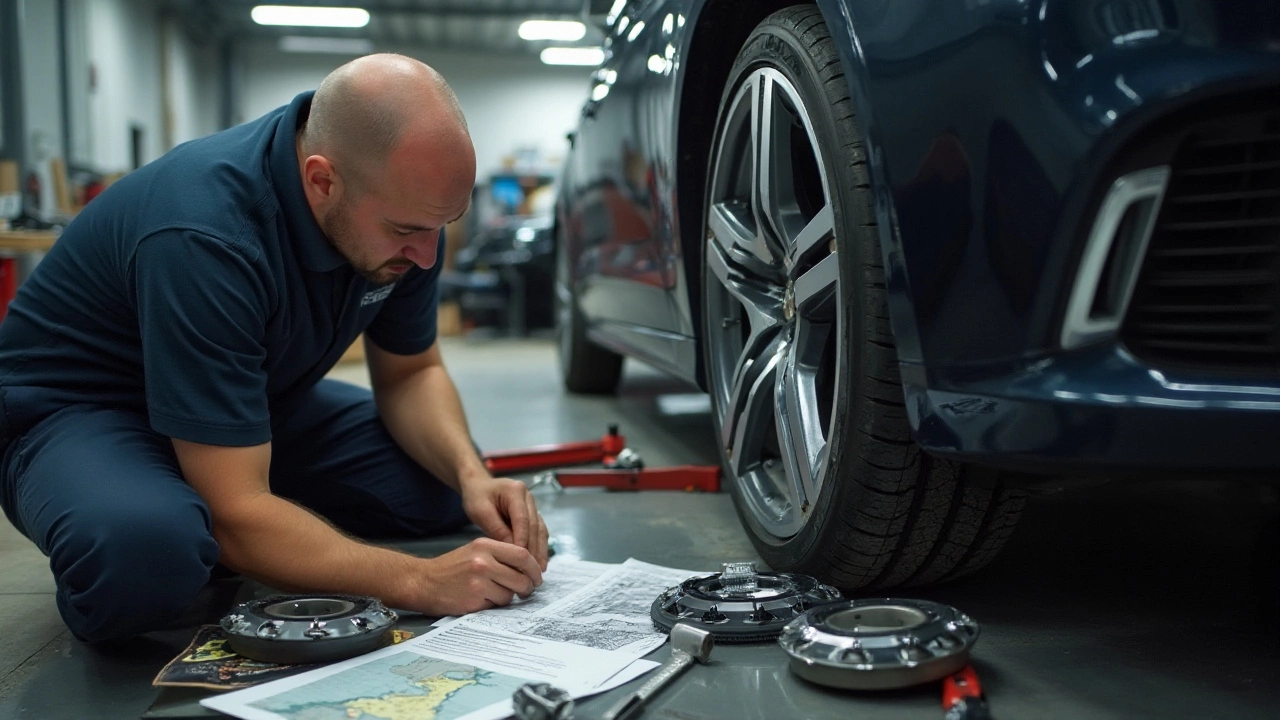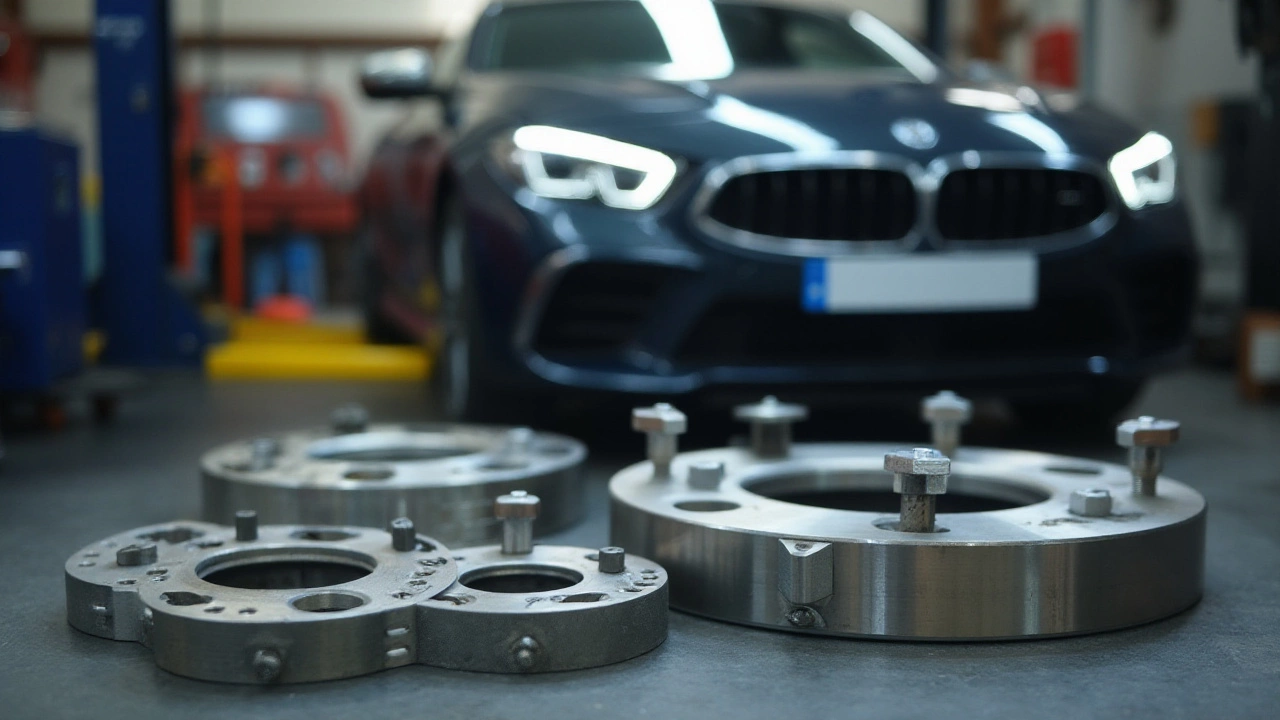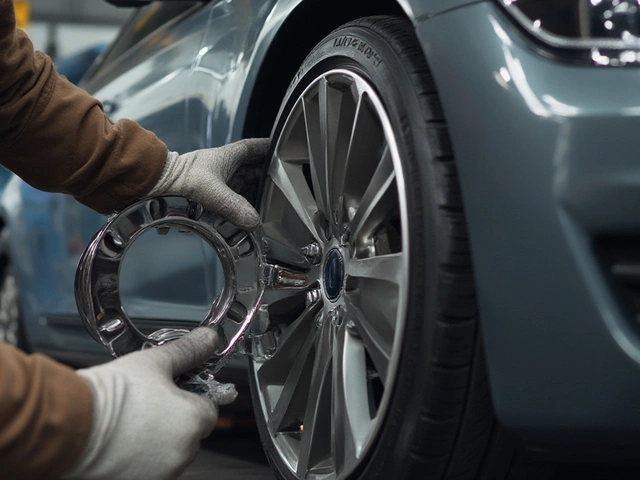Choosing the right wheel spacers for your vehicle can be a game-changer, both in terms of aesthetics and performance. Whether you're looking to enhance your car's stance or improve handling, understanding what to look for when buying wheel spacers is vital.
In this guide, we'll navigate through crucial factors that influence your purchase, such as the materials used in their construction and their compatibility with your vehicle. Wheel spacers aren't just about looks—when chosen and installed correctly, they can have a real impact on how your car feels and handles the road.
With safety and performance top of mind, we'll explore practical tips and insights to ensure you make a choice that's right for your vehicle. Dive in to discover how wheel spacers can transform your driving experience.
- Understanding Wheel Spacers
- Benefits and Drawbacks of Wheel Spacers
- Materials and Build Quality
- Fitment and Sizing
- Installation and Safety Precautions
Understanding Wheel Spacers
To understand wheel spacers, imagine indulging in the subtle balance of aesthetics and performance within your car’s design. They are essentially small metal disks that fit between the hub of the vehicle and the wheel itself. These can serve multiple functions—enhancing the visual appeal, improving handling by widening the wheelbase, or accommodating bigger brake systems. One fascinating aspect of wheel spacers is their ability to allow for customization without resorting to expensive wheel modifications.
Mechanically, wheel spacers increase the distance between the wheels and the wheel hub assembly, a factor that can significantly impact how your vehicle performs. This not only pushes the wheels outward but provides more surface area for better traction and stability. When selecting them, it's essential to consider the balance between the added width and the existing wheel system to prevent uneven tire wear and stress on the suspension components. Narratives from both enthusiasts and mechanics often highlight the need for precision in choosing spacers that match the car's specific dynamics and structure.
Types and Dimensions
Wheel spacers come in various types and sizes, each designed to cater to different vehicles and aims. Hub-centric and lug-centric are two main types; hub-centric spacers have a central flange that aligns the spacer directly with the hub, ensuring a snug fit. By contrast, lug-centric spacers rely solely on the lug bolts to line up the wheels. Accuracy in their dimensions—such as thickness—is crucial to maintain the integrity of the car's wheel alignment. A common standard is to match the spacer size to the vehicle's factory specifications, which helps maintain original ride characteristics.
The Materials Matter
The choice of material for wheel spacers often directly influences performance and longevity. Many manufacturers offer spacers made from high-quality aluminum or steel, each having distinct benefits. Aluminum spacers are lighter and resistant to rust, making them a favored choice for performance cars aiming to reduce unsprung weight. On the other hand, steel spacers provide a durable alternative, often recommended for heavier vehicles like trucks due to their strength. When considering long-term use, assessing the quality of material is vital for ensuring safety and effectiveness in everyday applications.
"Wheel spacers, when used appropriately, can be a driver’s best ally in bridging both cosmetic appeal and practical utility," says a renowned automotive engineer from Auto Trends Weekly.
Choosing wisely and focusing on your specific needs will lead to the best results. Whether you aim for improved handling or wish to achieve a more aggressive stance, understanding the basic mechanics and applications of wheel spacers can empower you to make those changes with confidence. With the right knowledge, you'll be driving a car that not only looks the part but delivers on its promise of performance and safety.
Benefits and Drawbacks of Wheel Spacers
Wheel spacers can truly transform how a vehicle looks and feels. These devices are inserted between the hub of the wheel and the actual wheel itself, creating more space. One of the primary benefits you might notice is the aesthetic appeal. By widening the stance of your car, wheel spacers often enable a more aggressive look, which many car enthusiasts love. Additionally, a wider track can improve cornering capabilities, providing that planted feel as your vehicle hugs the road. This enhanced stability can be particularly beneficial during high-speed maneuvers or sharp turns, giving drivers increased confidence behind the wheel.
Another handy benefit is that wheel spacers can allow for the installation of larger brake calipers without risking them rubbing against the wheels. This expands your options when looking to upgrade your braking system for increased performance or safety. Plus, if you are using custom wheels with unique offsets, spacers can help achieve the perfect fitment. Interestingly, although wheel spacers can add weight to your car, many drivers report a negligible impact on fuel efficiency, especially in small sizes.
"The key is getting the right balance in size; spacers should match the vehicle's hub and wheel specifications precisely," says automotive expert Jared Olson from Car Enhancement Magazine.
Despite the numerous advantages, there are drawbacks you’ll need to consider. Improperly installed or mismatched wheel spacers can lead to serious safety issues. If not fastened down correctly, they could cause the wheels to wobble, potentially leading to uneven tire wear or, worse, an accident. It's crucial to ensure that spacers are made of high-quality materials like aircraft-grade aluminum to avoid durability concerns. This material offers good corrosion resistance and robust longevity.
Some car manufacturers may void warranties if wheel spacers are used, especially if they are not approved or tested as part of their in-house modifications. Additionally, introducing spacers can alter the suspension dynamics of the vehicle, and if not adjusted correctly, it might affect steering feel or responsiveness. Finally, it’s important to conduct regular maintenance checks when using wheel spacers. Check that all bolts remain secure to prevent any loosening over time due to vibrations.
For those considering wheel spacers, weighing out these benefits and drawbacks is essential to making an informed decision. Users who proceed with caution and adhere to recommended installation can look forward to a rewarding enhancement of their vehicle's aesthetics and performance. It’s always wise to consult with a professional mechanic or automotive specialist before making any significant changes to ensure your safety on the road.

Materials and Build Quality
When considering the purchase of wheel spacers, one of the most crucial aspects to evaluate is the materials used in their construction and the overall build quality. Wheel spacers are designed to provide additional clearance between the wheel and the hub, which means they bear a significant amount of stress. The materials and construction can directly impact their performance, longevity, and most importantly, safety.
The most common materials you will find in wheel spacers are aluminum and steel. Aluminum spacers are often preferred because they are lightweight and provide good corrosion resistance, making them ideal for daily driving and racing applications where weight savings are critical. Specifically, aircraft-grade aluminum alloys, such as 6061-T6, are favored for their strength-to-weight ratio. A fact worth considering is that aluminum wheel spacers are resistant to rust, which is an added advantage for those living in areas with harsh weather conditions.
On the other hand, steel spacers are known for their durability and robustness. They are heavier than their aluminum counterparts, which might affect the vehicle's unsprung weight and handling in specific scenarios. However, steel offers unmatched strength, which makes it suitable for heavier vehicles or off-road adventures where extra durability is beneficial. One of the key factors in the build quality is how well-machined the spacers are. Precision machining ensures a perfect fit with the hub and wheel, eliminating the risk of vibration or wobble that can arise from poor alignment.
Cyrus Bradley, an automotive engineer, once noted, "Choosing the right material for your wheel spacers is not just about strength but also about how it integrates with your vehicle's existing systems."
Beyond materials, the finish of the spacers can also offer insights into their build quality. Anodized coatings, frequently used on aluminum spacers, provide an additional layer of protection against scratches and wear and enhance the overall look. It's worth noting that while a polished finish might look appealing, durability should never be compromised for aesthetics. In terms of manufacturing, look for manufacturers who adhere to high-quality control standards and have ISO certifications.
For those who are technically inclined, examining the spacer’s design is also essential. The number of lugs, the hub-centric versus lug-centric design, and the use of integrated studs or lug nuts play a role in how the spacer functions once installed. A hub-centric spacer, for instance, centers the assembly on the axle and is preferable because it reduces pressure on the lugs and minimizes the chance of vibration. Safety is paramount, and purchasing from reputable manufacturers or distributors, who often provide warranties or guarantees, is advisable.
Understanding the nuances of materials and build quality helps ensure that your investment in wheel spacers is sound, allowing them to perform optimally and safely across varied driving conditions.
Fitment and Sizing
Getting the right fitment and sizing for your wheel spacers is crucial to achieving the desired benefits without compromising safety. The fitment refers to ensuring that the spacers properly align with the bolt pattern and diameter of both the wheel hub and the wheel itself. A mismatch can lead to poor handling, vibration, or even unsafe driving conditions. Spacers are not universally sized, so attention to their dimensions relative to your wheel and axle is essential. Research is key to ensuring compatibility, and it's always wise to consult the vehicle's manual or a reliable reference guide before making a purchase.
Accurate sizing goes beyond just the fit with your wheel’s hub. It's about adjusting the distance just right to achieve that perfect aggressive stance without interfering with the wheel well or altering the steering geometry negatively. Typically, spacers range from 3mm to over 20mm, and the choice depends on what you're aiming for aesthetically and functionally. For those looking to upgrade their vehicle's performance and look, the decision hinges not just on matching sizes but also on the specific needs of your vehicle model.
It's also crucial to factor in the thread pitch, center bore specifications, and bolt size. Getting these wrong can result in complications during installation. There can be variations even among models from the same manufacturer. Therefore, verifying these measurements beforehand saves time and effort and avoids any unwelcome surprises later on. As automotive expert Mike Ettore notes, "Correct sizing ensures that the load stresses are appropriately distributed across the wheel assembly, which is vital for the longevity of suspension components and the overall handling of your car."
One practical tip is to use calipers or specialized gauges to measure existing components accurately. Surprisingly, many car owners overlook these tiny details, leading to complications down the line. Remember, precision is your friend when selecting wheel spacers. A little diligence now can prevent major hassles or costs associated with incorrect fitment. To ensure compatibility, look for vendors who provide a fitment guarantee or return policies allowing you to exchange spacers if they don’t line up perfectly.
Moreover, the use of test spinners or fitment templates can be exceedingly helpful. These tools allow you to physically test how spacers will fit before committing to installation. If you happen to doubt or find fitment challenging, professional advice from an experienced mechanic or a wheel expert can be invaluable. After all, striking that balance where both fitment and sizing are spot on is not merely an exercise in aesthetics; it’s about securing performance, longevity, and peace of mind for every mile driven.

Installation and Safety Precautions
Installing wheel spacers might seem straightforward at first glance, but it's a task that demands attention to detail and a methodical approach to ensure both safety and the desired performance benefit. To begin with, proper tools are non-negotiable. Ensuring that you have all the required equipment—such as a torque wrench, jack, and wheel chocks—is crucial to streamline the installation process and prevent any potential mishaps.
Before you start, it's essential to clean the hub and wheel mounting surfaces meticulously. Any dirt or debris can lead to improper seating of the spacers and wheels, potentially resulting in a wobble or even the failure of the equipment. Ensuring that wheel spacers are tightly secured to the hub is vital, so using thread-locking compound on the bolts can provide an additional layer of security. When tightening the lugs, adhere to the manufacturer's specified torque rating to avoid over-tightening, which can cause warping or damage.
Safety First
Safety is paramount during the installation of wheel spacers. Jack stands should always be used instead of relying solely on a hydraulic jack during installation. This ensures stability and safety for those working beneath the vehicle. When installing, a star pattern for tightening the lug nuts is advisable, ensuring even pressure and reducing the risk of wheel imbalance. One frequently overlooked but vital factor is to periodically check the torque settings after installation, especially after the first 100 miles of driving, to ensure everything remains secure.
Consulting trusted automotive resources can offer additional insights. As Andrew Johnson, an automotive expert from Car Savvy Magazine, states, "The key to using wheel spacers effectively lies in understanding your vehicle's dynamics and ensuring proper installation. Neglecting these factors can greatly compromise safety." Taking some time to understand the specifics of your vehicle and spacer can prevent a host of problems. While the excitement of improved aesthetics and handling is appealing, never compromise on safety.
Final Checks and Tests
Upon completion of the installation, performing a test drive to assess handling and performance is a good practice. During this test drive, pay close attention to the steering feel and listen for any unusual noises. If any anomalies arise, re-checking the installation is imperative. It’s worth noting that vehicle safety ratings and handling dynamics depend heavily on correct spacer usage, which should align with the manufacturer's recommendations.
Documenting your installation can also be handy. Keep track of torque specifications and dates of checks in a maintenance log. Some enthusiasts find value in using apps designed for automotive maintenance to keep digital records, making it easier to keep track of such essential tasks. It's these small steps that contribute to both vehicle safety and the longevity of your investment in car performance.




